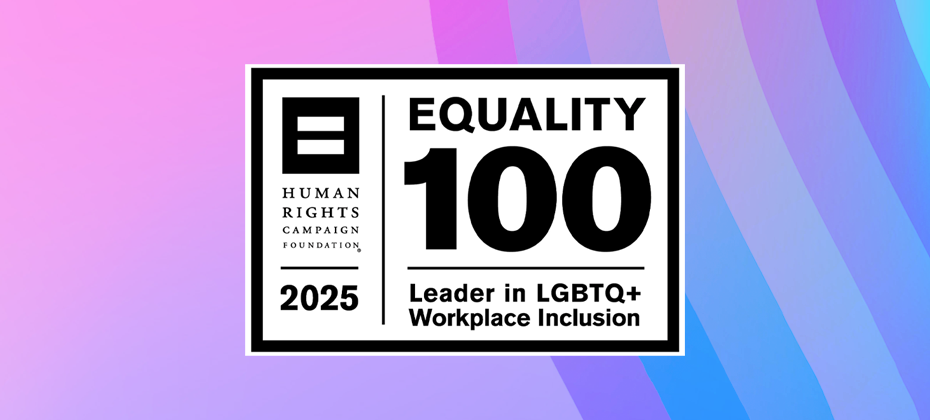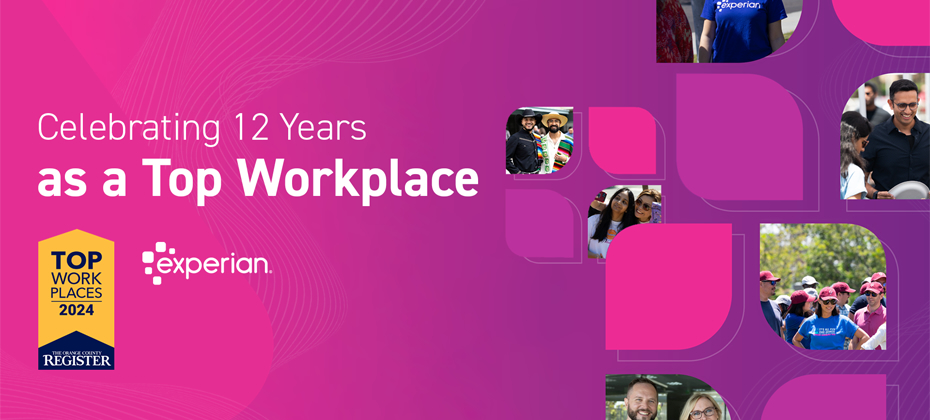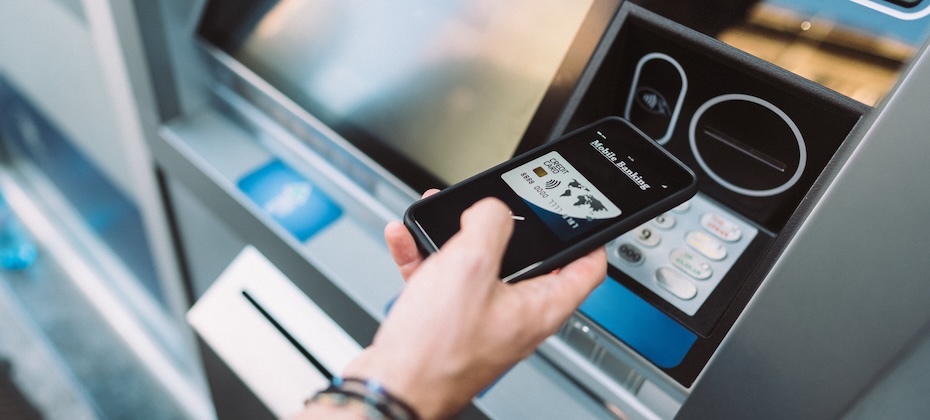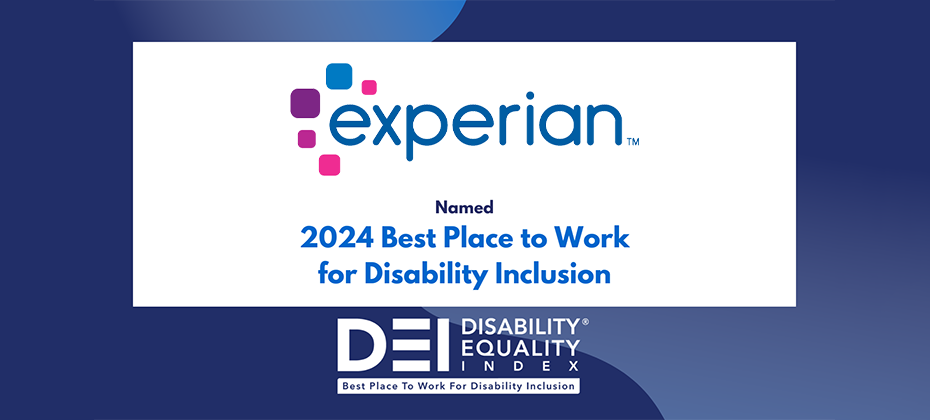At A Glance
At a Glance When an unknown printer took a galley of type and scrambled it to make a type 2ince the 1500s, when an unknown printer took a galley of type and scrambled it to make a type specimen book. It has survived not only five centuries, but also the leap into electronic typesetting, remaining essentially unchanged. It was popularised in the 1960s with the release ince the 1500s, when an unknown printer took a galley of type and scrambled it to make a type specimen book. It has survived not only five centuries, but also the leap into electronic typesetting, remaining essentially unchanged. It was popularised in the 1960s with the releaseince the 1500s, when an unknown printer took a galley of type and scrambled it to make a type specimen book. It has survived not only five centuries, but also the leap into electronic typesetting, remaining essentially unchanged. It was popularised in the 1960s with the releaseince the 1500s, when an unknown printer took a galley of type and scrambled it to make a type specimen book. It has survived not only five centuries, but also the leap into electronic typesetting, remaining essentially unchanged. It was popularised in the 1960s with the releaseince the 1500s, when an unknown printer took a galley of type and scrambled it to make a type specimen book. It has survived not only five centuries, but also the leap into electronic typesetting, remaining essentially unchanged. It was popularised in the 1960s with the release

This guest post is from Donna Freedman (@DLFreedman). Donna is a former newspaper journalist and staff writer for MSN Money and Get Rich Slowly. Currently she writes for Money Talks News and for her own website, donnafreedman.com. Bankcard lending is trending upward, according to the 2014 Experian “State of Credit” report. One in 17 consumers obtained at least one bankcard this year, compared with one in 21 people back in 2013. Consumers now carry an average of 2.18 bankcards apiece (an increase of 4.2 percent), and an average of 1.54 retail cards (a jump of 6.7 percent). In other words, credit availability is on the rise. Can we do it smarter this time? The recession left a lot of folks financially bruised. Some had their interest rates raised or their credit limits lowered. Those who couldn’t make even minimum payments were hounded by card issuers; some ultimately walked away, which sent their credit scores south. Apparently our kids were watching. The number of under-30s without credit cards rose from 9.3 percent in 2005 to 16.1 percent in 2012, as reported by The New York Times. Choosing debit over credit can keep consumers from running amok: You can’t spend what you don’t have, as opposed to the “free money!” vibe some folks get from credit cards. But debit doesn’t have the same protections as credit and, more to the point, debit doesn’t help your credit history. There’s good news on that front, too: The national VantageScore® credit score rose two points from 664 to a spooky 666. Yes, that number just begs for snarky commentary. But unlike some personal finance wonks, I happen to believe that credit is not from the devil. ‘Enormous repercussions’ Quite the contrary: I’m concerned that at least 16 percent of millennials are avoiding credit altogether. Having some plastic in your purse can make a giant difference in your life in ways that have nothing to do with shopping malls. “Your life is going to be harder and more expensive if you refuse to use credit cards,” says Liz Weston, author of “Your Credit Score, Your Money & What’s at Stake.” Responsible and sustained use of bank or retail cards has a major impact on your credit score – and a healthy credit score has “enormous repercussions for your wallet, your future and your peace of mind,” she notes. How enormous? An average of $159,464 in extra interest paid over your lifetime, according to Credit.com’s Lifetime Cost of Debt Calculator. Lenders use your credit score to determine rates for auto or mortgage loans. As noted above, a less-than-optimal score means you’ll pay more in interest – and it might keep you from borrowing at all. Potential insurers, bosses and landlords may also be looking at that three-digit number. Plenty of people think the current system is unfair because it penalizes those who choose to pay cash. But like it or not, it’s what we have to work with now. Avoiding bankcards because you resent the credit scoring system is like avoiding medical care because you think doctors make too much money. The only person you are potentially harming is yourself. “Unless you plan on writing checks for your cars, houses and tuition, you need the credit system,” says John Ulzheimer, credit expert for CreditSesame.com. ‘Credit’ doesn’t automatically mean ‘debt’ Using cash, debit cards and prepaid debit cards do nothing for your credit history. Debit cards may expose users to fraud and/or theft, especially if they shop online, notes Beverly Harzog, author of “Confessions of a Credit Junkie: Everything You Need to Know to Avoid the Mistakes I Made.” If your debit card gets hacked the thief could siphon money from your account. “This could cause a cash-flow crisis” until the bank investigates, Harzog says. Credit cards, on the other hand, “offer excellent consumer protections against fraud.” Incidentally, credit doesn’t automatically equal debt. Just as you wouldn’t overdraft with your debit, don’t overspend with a bankcard. Don’t trust yourself not to overbuy? Get a secured card – again, you can’t spend what you don’t have. Or ask to become an authorized user on a parent’s account; if you mess up, Mom or Dad can just drop you from the account. Use the card for utility bills and for everyday purchases like groceries and gasoline. Pay it off in full each month and your score will grow. (Tip: A blogger I know makes a payment every Friday, just to be on the safe side.) “The idea that credit cards are synonymous with debt needs to be smashed. People can and do use credit cards for convenience only, paying their balances in full every month,” Weston says. According to the Federal Reserve’s Survey of Consumer Finances, about 40 percent of households don’t carry balances, edging out the 35 percent that do. (One-fourth of U.S. households don’t have credit cards.) The best available tool The time to get credit and use it wisely is now, not 10 years from today when you decide you want to buy a house. “Part of a strong credit score is having well-established accounts, and you can’t get those overnight,” says Gerri Detweiler, director of consumer education for Credit.com. Wait too long and you’ll overpay, maybe wildly, for things you want or need. A low-score/no-score situation could also wind up affecting where you live or work. If nothing else, think of the opportunity cost of that $159,464 in extra interest. What could that money do for you in terms of investing, retirement planning, homeownership or helping your kids through college? Full disclosure: I am rabidly anti-debt. But I’m also rabidly against shooting yourself in the financial foot. It just makes sense to make wise use of the best tool available to strengthen your credit score. Put another way: You can use a hammer to bash your thumb, or to build something lasting. Ditto credit. It’s in the way that you use it.

Experian unveiled its fifth annual State of Credit report today, which provides a snapshot of consumers’ credit scores broken out nationally and by local market. This year’s findings show that the nation’s average VantageScore has improved by two points since last year, coming in at 666. In the city listings, Mankato, MN takes the top spot with a VantageScore of 706 and Greenwood, MS residents have the lowest score of 609 in the study. While the report gives residents of certain cities reason to celebrate their higher scores, the study isn’t meant make the lower cities sing the blues. These types of data-driven insights are meant to help consumers — to give them a reason to be interested in credit, to want to understand and improve their financial well-being, and to become a more savvy credit user and manager. The study this year not only provides the nation’s credit scores, but also touches on some trends that show lenders and borrowers may both be feeling more confident as the economy is picking up. According to the research, people are carrying more credit cards than last year — both bankcards and retail cards. The average number of bankcards per person is 2.18 and the average number of retail cards per person is 1.54. The nation’s average debt is also on the rise, coming in at $28,496 per person, which is an increase of 2.3 percent. While more cards and more debt may sound like a dangerous combination, if bills are being paid on time and the credit is being managed well, there’s nothing to be scared of … even with that national credit score of 666. To find out more about this year’s study, see the news release and visit www.livecreditsmart.com.

With Small Business Saturday quickly approaching, Experian wants to remind small business owners why it is important to have good business credit. Good credit scores – they’re not just for consumers. Businesses need them, too. According to a recent Experian survey, only 33 percent of small business owners said they were able to get the capital they need to maintain satisfactory cash flow. Good business credit can help business owners receive the funding they need, as well as help them earn more favorable terms and lower interest rates. “A business credit score is one of the first things lenders, suppliers and some customers look at before deciding to do business with a company,” said Laura DeSoto, senior vice president for Experian’s Business Information Services. “The insight that a business credit report provides, enables small business owners to take any necessary actions that will affect future growth. By spending dedicated time and resources building business credit, a company is establishing good management habits, which can help them obtain the resources they will need.” To help educate small business owners on the basics of building business credit, Experian is hosting a tweet chat on Wednesday, Nov. 19, at 12:00pm Pacific time. You can follow the conversation using #CreditChat. Small business owners can also get started monitoring the health of their business credit report at SmartBusinessReports.com, which is now mobile-friendly. Consumers are now able to order and review business credit reports from their smart phone or while at their desk. Business credit reports include pertinent data elements such as a commercial risk score, payment trends, public record information and key business facts. Other business credit management resources include: • BusinessCreditFacts.com – A source for understanding and learning about the benefits of managing business credit. Additionally, the site enables small business owners to check their business credit listing on Experian’s business credit database. • Experian.com/small-business – A Website that provides the tools and services for small business owners to monitor business credit, mitigate credit risk and manage cash flow.

Experian has been named to Forbes' list of the top 100 most innovative companies in the world. The world’s most innovative companies were united by one factor at the heart of Forbes’ methodology: ‘investors’ ability to identify firms they expect to be innovative now and in the future. This ‘Innovation Premium’, alongside other factors, determined whether a company is included in Forbes’ exclusive list. For Experian, innovation is part of our DNA, from the 1950s when a punch card system was introduced to process credit information, to the present day, where our data labs are at the forefront of data science. Experian DataLabs are staffed by teams of scientists with Ph.Ds. and applied research practitioners with expertise in advanced analytics and machine learning, as well as other advanced statistical methods. The lab in North America has had some remarkable success with Fortune 500 clients where they been able to identify previously undetected risks and signals from data sets comprising billions of transactions. By analyzing many multiple variables in new ways—natural language processing against payment card accounts for example, they gain insights that are incredibly useful for our clients. For example, one of the largest banks in American asked the DataLab to find more effective ways of convincing their debit card users to use their credit cards. To develop the solutions the lab analyzed about 7 billion customer transactions over a three-year period from the bank, and incorporated Experian’s data. The lab’s solution entailed finding 550 unique segments of users that the bank could target. That was far too many so the lab culled the segments down to 20. The bank was so pleased with the outcome it has engaged the lab in an ongoing contract. The developed solution is also being used by five other major banks. Our culture of innovation is thriving as Experian continues to grow and lead the way in developing solutions and harnessing the power of data to turn insights into actions. That value added insight can help a consumer secure an affordable loan, improve their credit score, or protect their identity; or for a business to mitigate risk, help prevent fraudulent transactions, or even to ensure they are marketing their products and services to the right consumers at the right time and across the right channels.

One of my favorite sayings growing up as a kid was, “One man’s trash is another man’s treasure.” While these words can have a very literal meaning, at its essence, it means that everything has a value to someone. There couldn’t be a more fitting circumstance to apply this saying than when you look at the automotive industry, especially in relation to leased and certified used vehicles. After all, most certified used vehicles were once leases. According to a recent analysis, Experian Automotive found that consumers in larger metropolitan areas leased more vehicles than were purchased new, and those in smaller areas tended to buy more certified used* vehicles than new. Cities such as Detroit and New York saw extraordinarily high volumes of leases. During the analysis period**, leases accounted for 67.9 percent of all new vehicle registrations*** in Detroit, while they accounted for 49.8 percent of new vehicle sales in New York. Top 5 metropolitan areas new vehicle lease penetration Detroit 67.9 percent New York 49.8 percent Flint, Mich. 49.1 percent Youngstown, NY 46.5 percent Cleveland 43.6 percent By comparison, cities such as San Angelo and Victoria, Texas had the two highest percentages of certified used registrations compared to overall vehicle sales. San Angelo had 26.7 percent of its total vehicle sales fall under the certified used category, while Victoria had 25.1 percent. Top 5 metropolitan areas for highest percentage of certified used vehicle sales San Angelo, Texas 26.7 percent Victoria, Texas 25.1 percent Corpus Christi, Texas 24.4 percent Odessa, Texas 24.3 percent Lubbock, Texas 24.2 percent “Not every market is the same. Economic and social issues often drive sales,” said Brad Smith, director of automotive market statistics for Experian. “Detroit for example, benefits from the presence of Chrysler, Ford and General Motors, as well as numerous suppliers and many friends and family programs. By gaining insight into consumer purchasing behavior in their market area, dealers and manufacturers can take more targeted actions with regard to managing their inventory, capitalizing on growth opportunities, gaining new customers and improving profitability.” Further analysis found that from a brand perspective, MINI had the highest percentage of certified used vehicles compared to total vehicle registrations**** at 32.7 percent, followed by Ram (28.9 percent), Hyundai (28.3 percent), Mercedes-Benz (28.3 percent) and Kia (27.7percent). So, which certified vehicles are consumers purchasing the most? The analysis showed that the Toyota Camry had the highest volume of certified used registrations, followed by Nissan Altima, Ford F-150, Ford Fusion and Chevrolet Silverado. The next time you are in the market to buy, which will you get … new or certified used? While not every vehicle type is going to meet every person’s preference or specific situation, by understanding what metal is moving in the market, dealers, manufactures and consumers can find the “treasures” that best fit their needs. *For the purposes of this analysis, certified used vehicles are an approximation based on model year parameters (0-5 years old) **Analysis was based on January-September 2014 data ***Minimum 10,000 new vehicle registrations ****Minimum 100,000 vehicle registrations

With all the discussions around the risks of big data, the fact that it can be used as a powerful enabler of good seems to be missed. The benefits of big data can be seen throughout our day to day lives from simple things like traffic alerts to more impactful purposes like those seen in today’s healthcare environment. At Experian we serve more than 2,800 hospitals and 9,000 physician practices and use big data to help serve their patients as quickly and efficiently as possible. Our data and technology guides hospitals, physicians and patients step by step through an increasingly complex healthcare process. With Experian’s curated data sets at their fingertips, health institutions are able to guide patients in determining whether they qualify for government programs like Medicare or Medicaid, as well as if they are eligible to participate in the Healthcare Insurance Exchange (HIX) subsidies. In many cases, the system alerts a patient of eligibility for aid that they were not even aware of. “Big data” also helps provide increased safety. Data-driven insights accurately verify patient identities when they arrive at a clinic or hospital. By making sure patients are who they say they are, we help clinics and hospitals prevent fraud, ensure accurate medical records and carry out proper care. Additionally, through Experian’s Payment Plan Advisor, the same institutions can help patients develop personalized payment plans that fit their individual financial circumstances and meet the necessary payment plan guidelines. Additional tools provide patients insight into how much they currently owe a facility for previous services while giving them a clear idea of what their financial obligation will be for the current visit. Lastly, when it comes to online databases of patient medical histories, “big data” delivers enhanced cyber security. Recent healthcare reforms have made patient data available online through pharmacies, hospitals and labs. This accessibility leaves that data exposed to would-be hackers. That’s why more and more health institutions are taking steps to safeguard patient histories by adopting identity theft protection platforms and device verification technologies – the same security mechanisms used by banks. Big data, combined with technology and of course people, is enabling better, safer care and facilitating an enhanced patient experience. When managed appropriately – and in compliance with existing laws and regulations on data use – data is a force for good. So the next time you need a helping hand, don’t forget how the power of “big data” can make a big difference.

This week, Experian is participating in the Money 20/20 conference at the Aria Resort and Casino in Las Vegas. This premier conference highlights innovators that are profoundly changing how consumers and businesses manage, spend and borrow money. At the conference, Experian is providing a comprehensive view on customer intelligence and how we can be a data partner in helping businesses make powerful decisions that help acquire, grow and protect mobile customers. The Experian team has hit the ground running and if you are attending the conference, be sure to check out all of the ways to meet up with us and stay connected. Here’s a quick overview: Meet the experts Stop by booth #218 in the Bristlecone Ballroom to learn from our mobile channel experts on how to deliver timely and relevant information and offers to your customers. Click here to schedule time with our experts. While at the booth, test your credit and fraud knowledge by playing Experian Buzz. Players have 90 seconds to put up furious points answering questions about personal credit scores to squelching online fraud. Best Buzzers will rock the leaderboard and the best of the best with win a time-smart Pebble Watch and other great prizes. See Mike Bruemmer, Vice President of the Data Breach Resolution group at Experian Consumer Services present with Yaron Samid, CEO of BillGuard Tuesday, Nov. 4 at 11:45-11:55 a.m. at Starvine 10, level 3. If you aren’t attending the conference and want to know more about what Experian is doing in this mobile space, there are many other ways to engage: Join the conversation Join the tweet chat hosted by @Experian on Twitter this Tuesday, Nov. 4 at 12:15 p.m. PT during the conference lunch hour to discuss trends in mobile payments. Use the #MobilePayChat hashtag to tune in! Connect with the Experian Money2020 group on LinkedIn to network and receive exclusive research during and after the conference. Research and insight Find out why merchants are rejecting near field communications from Experian’s mobile expert Cherian Abraham. Leveraging his deep understanding of mobile commerce and payments, Cherian sheds light into this trend. Read more: http://bit.ly/EXPN-NFC According to the Consumer Financial Protection Bureau, in 2013, about 74,000 new consumers used mobile banking per day. With the growing trend of consumers utilizing mobile platforms to conduct business, this paper examines how lenders have the opportunity to increase engagement with customers, offer more customized products and services with in-the-moment offers and enhancing loyalty by anticipating their financial service’s needs. Download the report here: http://ex.pn/1x2Nwrn. Our expertise spans a variety of industries including banking, utilities, telecommunications, mortgage, leasing, automotive, retail finance, public sector, fraud prevention, small business and consumer education. To learn more about our resources, visit http://www.decisionanalyticsblog.experian.com/. To wrap it up, we’re looking forward to attending and getting a taste of what happens at this much-talked about event. We’ll be sure to provide you with our thoughts and learnings very soon. Stay tuned! Photo source: Shutterstock

New research shows email marketers are two times more likely than all other marketers to integrate customer data across all channels According to a commissioned study conducted by Forrester Consulting on behalf of Experian Marketing Services, maturity in cross-channel marketing is low and, despite the adoption of multiple channels in marketing programs, integration and coordination do not occur consistently. The global research study, entitled The Road to Cross-Channel Maturity, also found that marketers seasoned in email, more than any other digital channel, are in a position to be the ones to lead the transition to the cross-channel marketing era. A complimentary copy of the study can be downloaded at Experian Marketing Services’ Website. Please visit http://ex.pn/ZDxdEQ. In particular, Forrester Consulting found that marketers around the world struggle to integrate data sources and adopt effective data-management practices. Only 24 percent of marketers surveyed said they use contextual data and customer data for a real-time view across channels. Sophisticated email marketers demonstrated significantly higher rates of data-usage best practices, which was twice as much as the average respondent. Practices among marketers in Asia-Pacific (APAC) countries demonstrated the highest prevalence of this mature use of customer data at 36 percent, with China leading the pack at 47 percent. APAC also led other regions in overall cross-channel marketing maturity. Seventy-five percent of marketers that Forrester Consulting identified as “sophisticated marketers” use data in real time. In the study, Forrester Consulting states “…an email can provide a consumer with information or incentive to engage with other channels. As one of the most reliable, consistently used channels, email has an opportunity to be more than another transaction-driving medium… With cues from email, marketers can better provide interactions in other channels and touch-points.” The Forrester Consulting study recommends that marketers identify where email is most relevant and influential in the customer’s path to purchase and then incorporate additional channels along the path that tie all the communications together. To understand marketers’ maturity in cross-channel marketing, Experian Marketing Services commissioned Forrester Consulting to evaluate digital marketers’ attitudes about, experiences with and challenges related to cross-channel marketing, as well as the role email marketing has and will have in delivering cross-channel interaction. Forrester Consulting surveyed nearly 500 digital-marketing executives in various industries in North America, Europe, Asia and South America, including decision makers responsible for search, email, social, Website, mobile and display marketing strategy execution. It also conducted in-depth interviews with senior executives in the United States and Canada. A Webcast about the study conducted by Forrester Consulting and commissioned by Experian Marketing Services is available to view on demand at http://ex.pn/1Ftjhyx.

More than 10 years ago I spoke about a trend at the time towards an underutilization of the information being managed by companies. I referred to this trend as “data skepticism.” Companies weren’t investing the time and resources needed to harvest the most valuable asset they had – data. Today the volume and variety of data is only increasing as is the necessity to successfully analyze any relevant information to unlock its significant value. Big data can mean big opportunities for businesses and consumers. Businesses get a deeper understanding of their customers’ attitudes and preferences to make every interaction with them more relevant, secure and profitable. Consumers receive greater value through more personalized services from retailers, banks and other businesses. Recently former Experian North American CEO Craig Boundy wrote about that value stating, “Data is Good… Analytics Make it Great.” The good we do with big data today in handling threats posed by fraudsters is the result of a risk-based approach that prevents fraud by combining data and analytics. Within Experian Decision Analytics our data decisioning capabilities unlock that value to ultimately provide better products and services for consumers. The same expertise, accurate and broad-reaching data assets, targeted analytics, knowledge-based authentication, and predictive decisioning policies used by our clients for risk-based decisioning has been used by Experian to become a global leader in fraud and identity solutions. The industrialization of fraud continues to grow with an estimated 10,000 fraud rings in the U.S. alone and more than 2 billion unique records exposed as a result of data breaches in 2014. Experian continues to bring together new fraud platforms to help the industry better manage fraud risk. Our 41st Parameter technology has been able to detect over 90% of all fraud attacks against our clients and reduce their operational costs to fight fraud. Combining data and analytics assets can detect fraud, but more importantly, it can also detect the good customers so legitimate transactions are not blocked. Gartner reported that by 2020, 40% of enterprises will be storing information from security events to analyze and uncover unusual patterns. Big data uncovers remarkable insights to take action for the future of our fraud prevention efforts but also can mitigate the financial losses associated with a breach. In the end we need more data, not less, to keep up with fraudsters. Experian is hosting Future of Fraud and Identity events in New York and San Francisco discussing current fraud trends and how to prevent cyber-attacks aimed at helping the industry. The past skepticism no longer holds true as companies are realizing that data combined with advanced analytics can give them the insight they need to prevent fraud in the future. Learn more on how Experian is conquering the world of big data.

Experian hosting Future of Fraud and Identity event during National Cyber Security Awareness Month Costa Mesa, Calif., Oct. 13, 2014 — Identity and fraud concerns are a pressing global issue for many industries, including financial services, public sector and retailers. With the rise in security and data breaches, many organizations across the United States are particularly challenged, due to the growth of malware viruses, mobile-payment advancements and the need to authenticate online and mobile consumers better. To help business leaders address these rising fraud and identity issues, Experian® is hosting the Future of Fraud and Identity event on Oct. 21 in New York City, N.Y. The event will feature: Ori Eisen, Experian fraud expert and founder of 41st Parameter, highlighting the current trends in cybersecurity and how technology can combat these major threats Frank Abagnale, of Catch Me If You Can fame and respected authority on financial crime and fraud, sharing his personal story highlighting his work with numerous financial institutions over the past 38 years Charles Chung, president of Experian Decision Analytics, a global leader in fraud and identity products, opening the event Jon Jones, senior vice president of fraud and identity for Experian Decision Analytics, presenting Experian’s strategic view on identity risk management Many organizations are trying to address fraud risks while adapting to the changing habits of customers. One example of this is the acceptance of new mobile-payment options that are driving a transformation of the payments ecosystem. Current mobile-fraud trends include the use of increasingly sophisticated malware as attackers capitalize on banks and retailers providing these new service offerings to consumers via mobile devices. “Gaining control in this dynamic fraud environment is a major challenge for businesses as the Internet and mobile technologies were not designed with fraud in mind. Consumers accessing their financial or personal data at any time is a key fraud risk today, further enabling criminal activity,” said Eisen. “As companies invest to meet customer expectations and ensure that payments are secure and reliable, we see an urgent need for proactive next-generation security measures with fraud detection and intelligent device identification for corporate accounts and online transactions.” In 2013, identity theft affected more than 13 million U.S. consumers and accounted for more than $18 billion in losses. As technologies evolve and information security tightens, the savvy nature of fraudsters becomes more sophisticated. As a result, fraud management needs to evolve and include both offline and online fraud strategies to provide a panoramic view of the customer. In order to achieve this, authentication processes need to become seamless and straightforward to allow both the consumer and the business to feel confident in the authentication process while creating a positive customer experience. “Serious risks are emerging for consumers and businesses as fraudsters identify new targets to attack. The monetary cost of fraud losses can be high, but the impact a loss or breach can have on customer relationships and brand integrity can be even higher,” said Chung. “Combining comprehensive authentication processes with proportionate measures to monitor user activities and protect consumer data throughout the life cycle is a competitive requirement in today’s market.” The Future of Fraud and Identity event will take place on Oct. 21 in New York City, from 7:30 a.m. to noon at the Helen Mills Event Space at 137 West 26th Street.

According to new research from Experian Marketing Services, a recognized leader in data-driven marketing, 90 percent of marketers struggle to move beyond single-channel marketing programs to optimize their marketing across channels or around the customer. The company today announced an expansion of its strategic, cross-channel consulting offerings to address this need and help organizations increase the sophistication and effectiveness of their marketing programs. Marketers can now take a free online assessment to discover where their organization falls on Experian’s Marketing Sophistication Curve The new program, which offers marketers strategic guidance around common marketing pain points, is designed to help them progress up Experian’s Marketing Sophistication CurveSM. The curve is a framework and road map that allows organizations to accurately assess the state of their marketing operations and identify the steps necessary for creating individualized marketing experiences around the customer. “Recognizing the need to change and knowing how to make that happen are two entirely different things,” said Matt Seeley, president, Experian Marketing Services, North America. “While the industry is exploding with marketing clouds and automation technology, most organizations have unique challenges that off-the-shelf software doesn’t address. Experian’s Marketing Sophistication Curve offers marketers help with the first critical step in that process: an understanding of where you are today and what you need to do tomorrow.” Experian Marketing Services is offering marketers a chance to identify where they fall on the curve on its Website. The four phases of Experian’s Marketing Sophistication Curve The culmination of more than 30 years of experience working with the world’s top brands to improve their marketing effectiveness, Experian’s Marketing Sophistication Curve outlines four primary phases of marketing sophistication: Phase I: Single-Channel Optimization — Brands at this stage seek new sources of data and analytical approaches to do more with existing programs and tools. They struggle to achieve a higher performance from data-driven campaigns. Phase II: Multichannel Marketing — Organizations at this stage engage customers across multiple channels but seek greater consistency. They struggle to incorporate newer channels, like mobile, into their messaging strategy. Phase III: Cross-Channel Marketing — The marketing organization at this stage implements cross-channel marketing programs but struggles to organize data and target campaign content around customers easily, consistently and in useful time frames. Phase IV: Cross-Channel Optimization — This is the apex of modern marketing, where customer context, location and timing merge with every imaginable form of customer data to create a single, shared and immediate view of the customer across all channels. Improving marketing by addressing the common pain points Experian Marketing Services’ new cross-channel consulting program offers marketers a set of new bundled offerings around three common pain points that must be addressed as marketers move from one phase of the curve to the next: acquisition, growth and retention, and win-back. “As new technologies and channels are introduced, consumer behavior changes, and in return how we assess and approach these traditional marketing issues needs to evolve,” continued Seeley. “The curve’s framework and the addition of the new strategic consulting bundles to our existing portfolio are part of our long-term commitment to be both a superior marketing technology provider and a strategic partner for leading marketers around the world.”

Experian Consumer Services Lanza Producto Crediticia en Español Experian Consumer Services in association with Univision Communications Inc., the leading media company serving Hispanic America, recently launched a Spanish-language, credit-focused product and online financial resource center for the U.S. Hispanic community called Crédito y Más. The new product was developed to improve Hispanics access to credit education and resources. With Crédito y Más, consumers can check their credit score, receive a credit report, and have credit monitoring, among other benefits and access the information in Spanish or English. One of the most valuable features is the Centro de Información™, a robust resource center with articles, videos, financial calculators, a glossary of key credit terms and more. The additional unique features include: Access to VantageScore® 3.0. – with scores ranging from 300 to 850, VantageScore® 3.0 is a user-friendly credit score model developed by the three major nationwide credit reporting agencies, Experian®, TransUnion®, and Equifax® Communication Preference Settings – the member can select to receive communications (email and SMS) in either Spanish or English Instructional Guides – an interactive experience provides clarity in Spanish and English around how to read a credit report and the information found in each section of the website Bilingual Agents – members will have access via phone to Experian Customer Service representatives and Fraud Resolution Agents for support that are fully bilingual Identity Theft Insurance – the $10,000 insurance policy can cover legal fees, lost wages and other costs resulting from identity theft For more information and to enroll in the product membership, consumers can visit www.creditoymas.com. Para más información y cómo registrarse en una membrecía con Crédito y Más, visite www.creditoymas.com.











